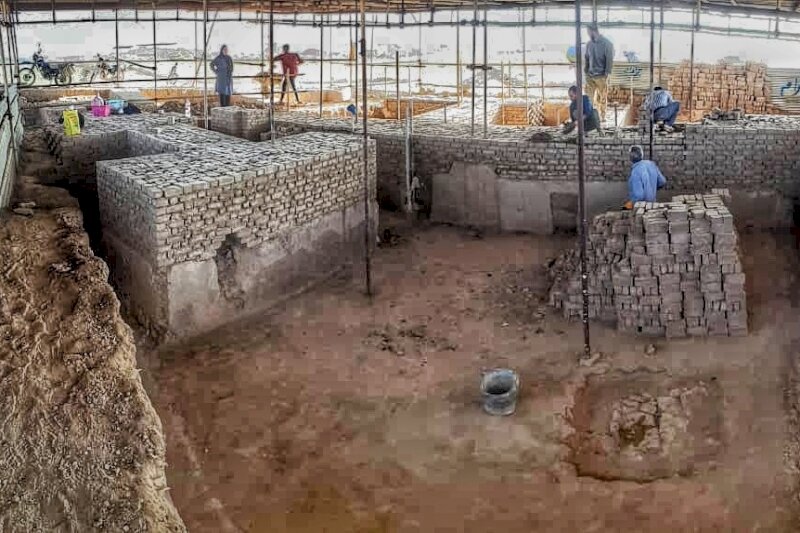Some $27,000 allocated to set up museum on Tepe Rivi

TEHRAN – A budget of 1.1 billion rials ($27,000 at the official rate of 42,000 rials) has been allocated to set up an open-air museum on Tepe Rivi, an ancient hill in northeastern North Khorasan province, which has so far yielded magnificent remains of the Bronze Age up to the Sassanid period.
The budget will be spent on restoration of the mud-brick structures discovered during several excavation seasons in the area, deputy provincial tourism chief Ali Mostofian said on Sunday.
The project also aims at generating job opportunities as well as promoting the archeological site as a top tourist destination in the country and attracting more travelers to the region, the official added.
Archaeological research works in Rivi started in 2012. Since then teams of Iranian and German archaeologists accessed remains of settlements from the Bronze and Iron Age, the Achaemenid (550–330 BC), the Parthian (247 BC – 224 CE), the Sassanid dynasty (224-651 CE), and the early Islamic period.
The teams have completed seven archaeological seasons across the site and based on a new agreement their cooperation will be continued for the next five years.
Experts in the fields of archeology, geography, geophysics, geomorphology, and ecology from the [Ludwig Maximilian] University of Munich; the [Free] University of Berlin; the University of Tehran; and Shahid Beheshti University have worked in the previous rounds of research.
Based on the studies, various architectural and archaeological evidence from the Parthian and the Sassanid era were discovered in the Rivi site, which is situated in Maneh-Samalqan county of North Khorasan province.
The evidence, according to Mohammad-Javad Jafari who headed of the fifth season of archaeological excavation at Rivi site, indicates the sequence of settlement in the area in the aftermath of the Achaemenid era, according to the Archaeology News Network.
Back in October, a number of historical clay stamps, estimated to date from the Achaemenid and Parthian eras, were discovered in the ancient site.
“The seals were found alongside clay urns in a large hall and the seals are imprinted in a variety of geometric patterns [depicting] plants, animals, and human figures. Studying the findings can yield valuable information on the economy, culture, and arts of the ancient societies,” Jafari said.
“These stamps represent the widespread and complicated economic relations that people of the time had with other communities in such a way that made them bring together and store goods.”
Evidence suggests that residents of this area sealed the urns that were loaded with particular goods then tied them with ropes, the archaeologist said.
ABU/MG
Leave a Comment